When Seth Jones and Zach Werenski joined the Columbus Blue Jackets, head coach John Tortorella said he was going to start thinking about defense differently.
He called his new young talents the “engine” of the team and defined them as “rovers” more than “defensemen.” Now, the Columbus blue line is one of the more aggressive in the league, Jones gets mentioned in Norris Trophy conversations, Werenski was a Calder Trophy finalist his rookie year, and this season, he led all NHL defensemen in goals scored (20).
When it comes to these types of successes, can we look under the hood and see how these two are not just performing but also how that relates to them being utilized? Thanks to a new tool from Natural Stat Trick that allows us to see a player’s average performance over the course of a shift depending on where the shift begins...we can.
In these charts, blue represents offensive quality (as measured in expected goals for per 60 minutes), while red represents defensive quality (as measured in expected goals against per 60 minutes). Each measure has three lines:
- A solid bold line = how the player in question performs
- A dashed line = how the player’s team performs minus the player we are looking at
- A think solid line = how the league performs
You want your blue values to be as high as possible (score more goals!), your red values to be as low as possible (no goals against!) and we can look at shifts that start in the offensive, neutral, or defensive zone for comparison.
As a comparison, let’s look at last season’s Norris Trophy winner, Nashville’s Roman Josi. (All charts represent 5-on-5 play)
Starting In the Defensive Zone
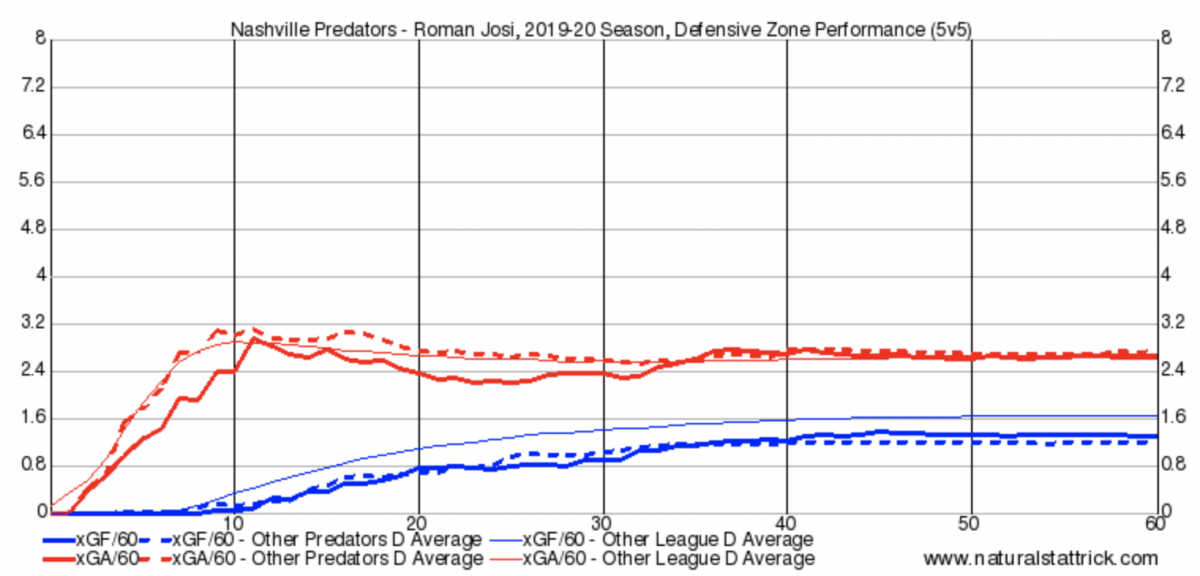
Visual via Natural Stat Trick
What we see here is that defensively, there’s not a lot of oomph from Josi at shift start but there is consistency. He more or less holds true with both his team and the league.
So how about those top two Columbus defensemen?
Here’s Werenski:
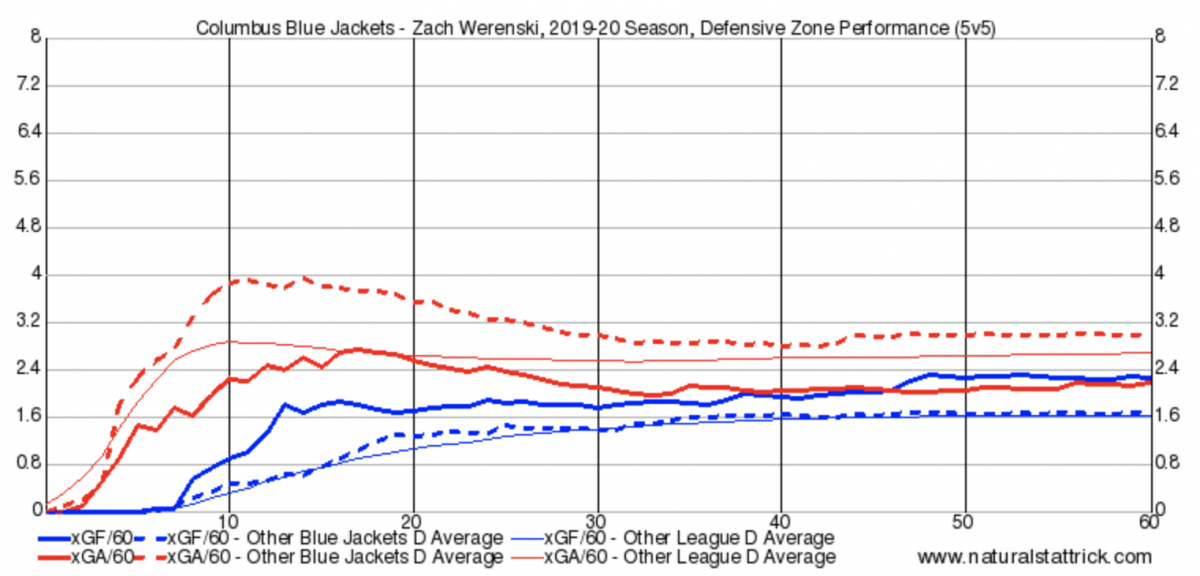
Visual via Natural Stat Trick
An unheralded note is how much more defensive Werenski was than both his team and the league and he actually improved in suppressing opponents’ offense as a shift went along. Unsurprisingly, he gave a big offensive push within the first 13-15 seconds of a shift, even starting in the offensive zone and maintained an offensive edge. We should certainly do more work here to investigate if this is tied to how effectively the team transitions out of the defensive zone with Werenski on the ice – remember, this represents just shifts that start in the defensive zone – it doesn’t mean the team and/or player remain there for the entirety of the shift.
And Jones:
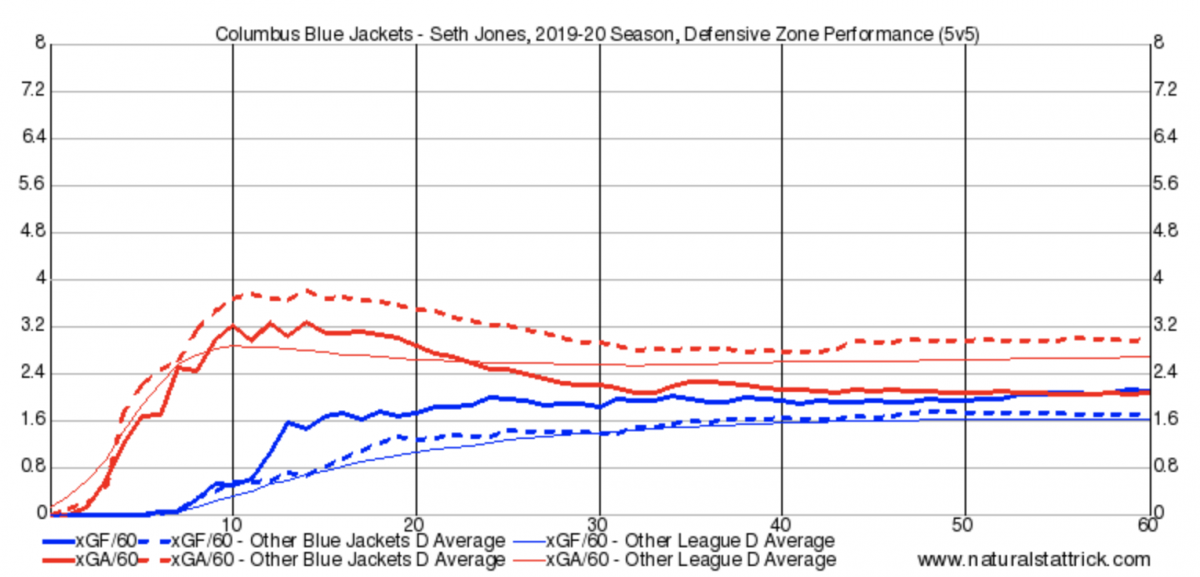
Visual via Natural Stat Trick
While the degree of difference is smaller for Jones than his partner, this past season, the All-Star also bore out an ability to get stronger defensively as his shift went along and maintain an offensive edge almost entirely throughout a shift started in his own zone. It is worth noting that Jones took some time to settle out as better than league average defensively, not crossing that threshold until over 20 seconds into a shift.
So we see that Jones and Werenski were able to turn tides the Blue Jackets’ way even when they started in their own zone, and their offensive liberty (and the ability to take advantage of it) also shine through. What about when these two actually start in the offensive zone to begin with?
Starting In the Offensive Zone
Let’s again look at Josi for comparison. Here’s how Nashville's captain performed when starting a shift in the offensive zone.
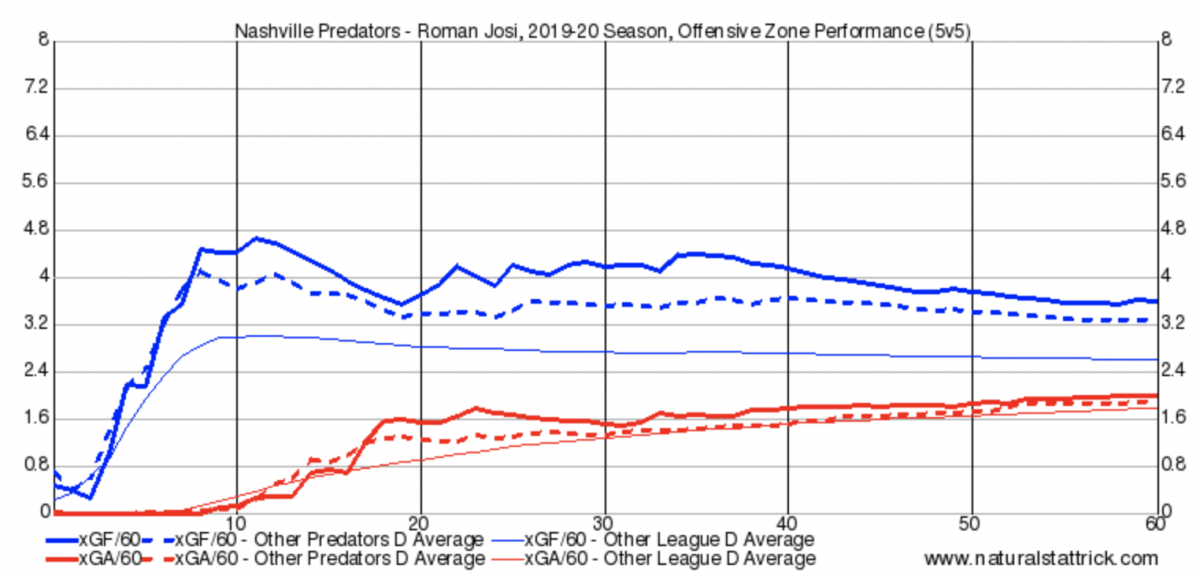
Visual via Natural Stat Trick
Offensive starts obviously boost Josi’s contributions – as we’d expect with any player. But here he rises above his team and significantly above league average. Defensively, again, we see a consistent performance in line with both the rest of Nashville’s blue line and the league average.
Now, back to Werenski.
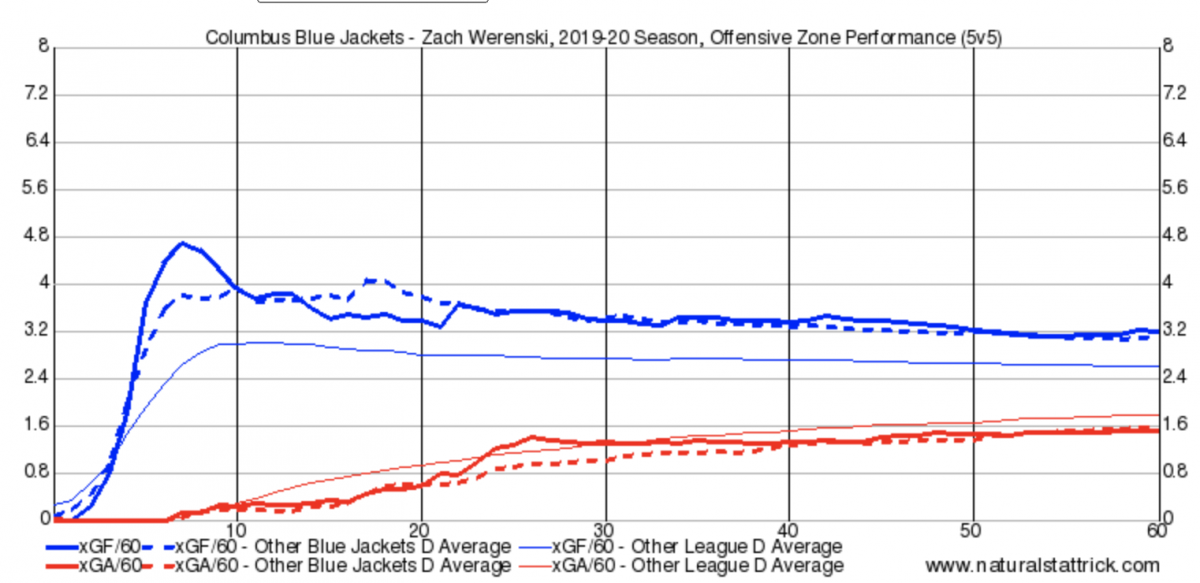
Visual via Natural Stat Trick
While Werenski (like Josi) rises above league average, after an initial burst within the first 10 seconds of a shift start, he falls in line with his fellow Columbus blue liners (all of whom sit above league average). Defensively, the group and Werenski are slightly below league average but holding true to performance the longer a shift goes on.
What about Jones?
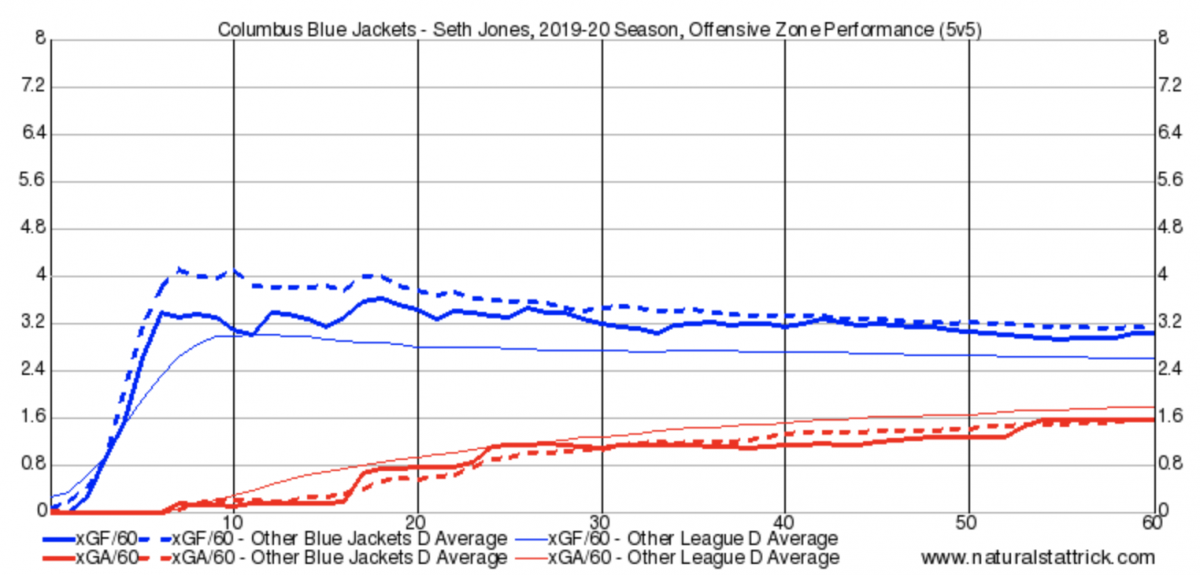
Visual via Natural Stat Trick
While Werenski gets the offensive burst, we see that Jones tends to hold closer to league average compared to his teammates, but think about where we see Jones play.
More often than not, as Werenski aggressively pinches or attacks the net, Jones plays responsibly as a backstop closer to the top of the zone. He also fires more shots from the point. Without the input of player or coaches (we’ll let them enjoy the “offseason” without our annoyances a bit longer) what we see in terms of systems and roles supports what this visual tells us. Much like Werenski, Jones holds steady defensively – albeit slightly below league average – perhaps with a bit more consistency than his partner.
Points to consider
All of this gives us one more way to evaluate players – it’s certainly not the end-all, be-all. We included Josi as a comparison not to diminish his honors last season nor to mount some Norris campaign for Werenski or Jones (yet). But the look side-by-side does show how small margins of measure can be player to player; it also shows us that the top two defensemen Columbus has don’t show some vastly different profile of play than an acknowledged premier defenseman (at least using this method of evaluation).
Worth noting: among Blue Jackets defensemen, Jones and Werenski had some of the fewest defensive zone starts last season. This again makes sense given what we know about the defensive corps. David Savard and Vladislav Gavrikov – along with Ryan Murray – started far more in the defensive zone. It’s also valuable to see that starting these players in either zone doesn’t present a significant liability, and in no situation do we see a big drop off in either player’s contribution as a shift goes on.
While we joke about not having player and coach input here, it would be invaluable. Based on what we see, these questions would be great to ask of assistant coach Brad Shaw:
- What goes into your deployment of Jones and Werenski?
- Is the best defense a good offense?
- Are you asking the two players to do different things? And if so, what?
- Is there a "sweet spot" in a shift length?
Maybe some day soon we'll begin to gather those answers!
